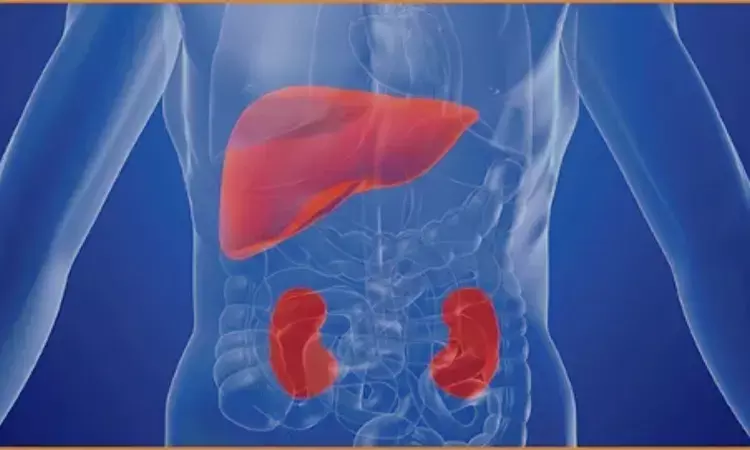- Home
- Medical news & Guidelines
- Anesthesiology
- Cardiology and CTVS
- Critical Care
- Dentistry
- Dermatology
- Diabetes and Endocrinology
- ENT
- Gastroenterology
- Medicine
- Nephrology
- Neurology
- Obstretics-Gynaecology
- Oncology
- Ophthalmology
- Orthopaedics
- Pediatrics-Neonatology
- Psychiatry
- Pulmonology
- Radiology
- Surgery
- Urology
- Laboratory Medicine
- Diet
- Nursing
- Paramedical
- Physiotherapy
- Health news
- Fact Check
- Bone Health Fact Check
- Brain Health Fact Check
- Cancer Related Fact Check
- Child Care Fact Check
- Dental and oral health fact check
- Diabetes and metabolic health fact check
- Diet and Nutrition Fact Check
- Eye and ENT Care Fact Check
- Fitness fact check
- Gut health fact check
- Heart health fact check
- Kidney health fact check
- Medical education fact check
- Men's health fact check
- Respiratory fact check
- Skin and hair care fact check
- Vaccine and Immunization fact check
- Women's health fact check
- AYUSH
- State News
- Andaman and Nicobar Islands
- Andhra Pradesh
- Arunachal Pradesh
- Assam
- Bihar
- Chandigarh
- Chattisgarh
- Dadra and Nagar Haveli
- Daman and Diu
- Delhi
- Goa
- Gujarat
- Haryana
- Himachal Pradesh
- Jammu & Kashmir
- Jharkhand
- Karnataka
- Kerala
- Ladakh
- Lakshadweep
- Madhya Pradesh
- Maharashtra
- Manipur
- Meghalaya
- Mizoram
- Nagaland
- Odisha
- Puducherry
- Punjab
- Rajasthan
- Sikkim
- Tamil Nadu
- Telangana
- Tripura
- Uttar Pradesh
- Uttrakhand
- West Bengal
- Medical Education
- Industry
Metabolic dysfunction-associated fatty liver disease may increase risk of gallstone development: JAMA

Japan: Findings from a recent longitudinal study have revealed a significant association between metabolic dysfunction-associated fatty liver disease (MAFLD) and increased odds of gallstone development in both men (3.019-fold) and women (2.201-fold).
The risk escalated with an escalating number of MAFLD disease components for individuals aged 50 and above. Key risk factors included waist circumference and age in men, while in women, current smoking and age emerged as significant contributors. The findings were published online in the Journal of Gastroenterology and Hepatology on January 11, 2024.
The findings imply that paying attention to an increase in the number of metabolic dysfunction-associated fatty liver disease components in patients aged ≥ 50 years is critical for gallstone prevention.
"After adjustment, the odds ratios of metabolic dysfunction-associated fatty liver disease for gallstone development in men and women were 3.019 and 2.201, respectively," the researchers reported.
The researchers noted a lack of clarity on the impact of MAFLD on gallstone development. Masahiro Sogabe, Tokushima University Graduate School of Biomedical Sciences, Tokushima, Japan, and colleagues aimed to investigate the longitudinal association between MAFLD and gallstone development in both women and men.
The observational cohort study included 5398 patients without gallstones who underwent > 2 health check-ups between 2014 and 2020. The association between MAFLD and gallstone development was analyzed using a generalized estimation equation model, according to repeated measures at baseline and most recent stage.
Based on the study, the researchers reported the following findings:
- After adjustment, the odds ratios of metabolic dysfunction-associated fatty liver disease for gallstone development in men and women were 3.019 and 2.201, respectively.
- Among patients aged ≥ 50 years, the odds ratio for gallstone development was significantly enhanced with increasing MAFLD component numbers in both sexes; however, no significance was observed in those aged < 50 years.
- Other significant risk factors for gallstone development were age (odds ratio: 1.093) and waist circumference (odds ratio: 1.048) in men and age (odds ratio: 1.035) and current smoking (odds ratio: 5.465) in women.
"The findings showed that risk factors for gallstone development differed between sexes, but metabolic dysfunction-associated fatty liver disease was common," the researchers wrote.
"Paying attention to an increase in the number of MAFLD components in patients aged ≥ 50 years is important for gallstone prevention," they concluded.
Reference:
Sogabe, M., Okahisa, T., Kagawa, M., Sei, M., Kagemoto, K., Tanaka, H., Kida, Y., Nakamura, F., Tomonari, T., Okamoto, K., Miyamoto, H., Sato, Y., Nakasono, M., & Takayama, T. Association of metabolic dysfunction-associated fatty liver disease with gallstone development: A longitudinal study. Journal of Gastroenterology and Hepatology. https://doi.org/10.1111/jgh.16483
Dr Kamal Kant Kohli-MBBS, DTCD- a chest specialist with more than 30 years of practice and a flair for writing clinical articles, Dr Kamal Kant Kohli joined Medical Dialogues as a Chief Editor of Medical News. Besides writing articles, as an editor, he proofreads and verifies all the medical content published on Medical Dialogues including those coming from journals, studies,medical conferences,guidelines etc. Email: drkohli@medicaldialogues.in. Contact no. 011-43720751


